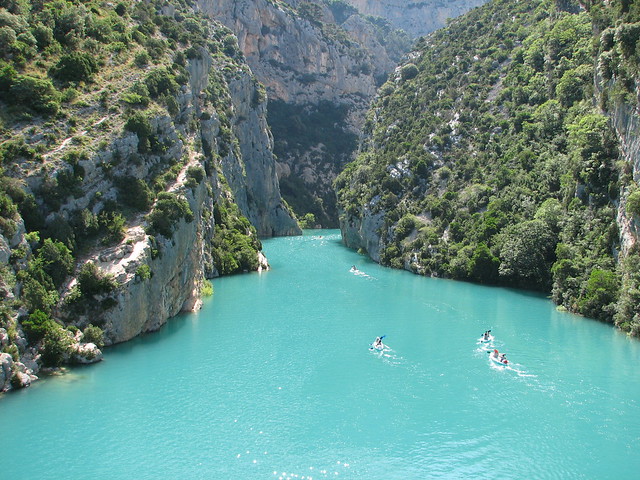Weather on the Winter Solstice.
a) What day does the Winter Solstice occur:
__December 21st______
b)
What is the average MAXIMUM temperature during this MONTH:_5 degrees Cc) What is the average MINIMUM temperature during this MONTH: _1 degree C______
d) What type of precipitation is likely to occur on the Winter Solstice: __Rain_______
The winter solstice in France occurs on December 21st. The average minimum temperature of France in the month of December is 1 degree Celsius (33.8 degrees Fahrenheit) and the maximum is 5 degrees Celsius (41 degrees Fahrenheit). It would most likely be raining in December. The majority of the days in December are above 32 degrees Fahrenheit so I assumed that means it would be raining at the surface.
Weather
on the Summer Solstice.
a)
What day does the Summer Solstice occur: ___June 21st_______
b)
What is the average MAXIMUM temperature during this MONTH:
__20 degrees C____
c)
What is the average MINIMUM temperature during this MONTH:
__11 degrees C_____
d)
What type of precipitation is likely to occur on the Summer Solstice:
___rain_____
The summer solstice in France occurs on June 21st. the average maximum temperature in this month is 20 degrees Celsius (68 degrees Fahrenheit). The average monthly minimum temperature in June is 11 degrees Celsius. (51.8 degrees Fahrenheit) with these temperatures the most likely form of precipitation is rain.
Weather
on the Spring Equinox.
a)
What day does the Spring Equinox occur: ___March 20th_______
b)
What is the average MAXIMUM temperature during this MONTH:
____10 degrees C________
c)
What is the average MINIMUM temperature during this MONTH:
_____3 degrees C_____
d) What type of precipitation is likely to occur on
the Spring Equinox: _____rain_________
The Spring Equinox is on March 20th in France. The maximum average monthly temperature for March is 10 degrees Celsius (50 degrees Fahrenheit). And the minimum average monthly temp for March is 3 degrees Celsius (37.4 degrees Fahrenheit). Therefore rain is the most likely form of precipitation.
Weather
on the Autumnal Equinox.
a)
What day does the Autumnal Equinox occur: __September 23rd_____
b)
What is the average MAXIMUM temperature during this MONTH:
____20 degrees C______
c)
What is the average MINIMUM temperature during this MONTH:
_____10 degrees C_______
d)
What type of precipitation is likely to occur on the Autumnal Equinox:
____Rain________
The Autumnal Equinox is on September 23rd in France. The maximum average monthly temperature for March is 20 degrees Celsius (68 degrees Fahrenheit). And the minimum average monthly temp for March is 10 degrees Celsius (50 degrees Fahrenheit). So once again rain is the most likely form of precipitation.
**there are mountainous regions of France that get large amounts of snow and are much cooler than these temperatures!!!!!!
Travel Agent Advice.
a) If I was a tourist visiting your country
which of the four seasons (represented by the key days listed above) would you
recommend to me for traveling to your country ____Either fall or summer________.
b) During this season what types of
activities could I do in your country.
List two activities:
___Visit Dunes of Pyla________ __Gorge do Verdon___
The Dune of Pyla is the tallest sand dune in Europe and can be found near the Arcachon Bay area. At the summit of the dune the view overlooks the Atlantic coast and the inlet of the bay on one side and a large pine forest on the other!
The Gorge du Verdon (picture below) is a 15 mile long canyon that rises a whopping 2,300 feet from the Verdon river below. The river is named after its gorgeous green color and is one of the Gorge du Verdon’s most beautiful features. ater sport opportunities here include rafting, kayaking, sailing and water skiing and more.
Rarely, in some parts of France during summer there may be drought and wildfires. Other than that, because France is so temperate during summer and fall the weather is merveilleux. in summer the warmest month is July with an average monthly high of 73.4 degrees Fahrenheit.
d) Include an image from your country that
you would show me to convince me to travel

Gorge du Verdon
e) Create a one sentance catchy “advertisement” to entice tourist to visit your country.
France est plus que juste
Paris; France is more than just Paris.